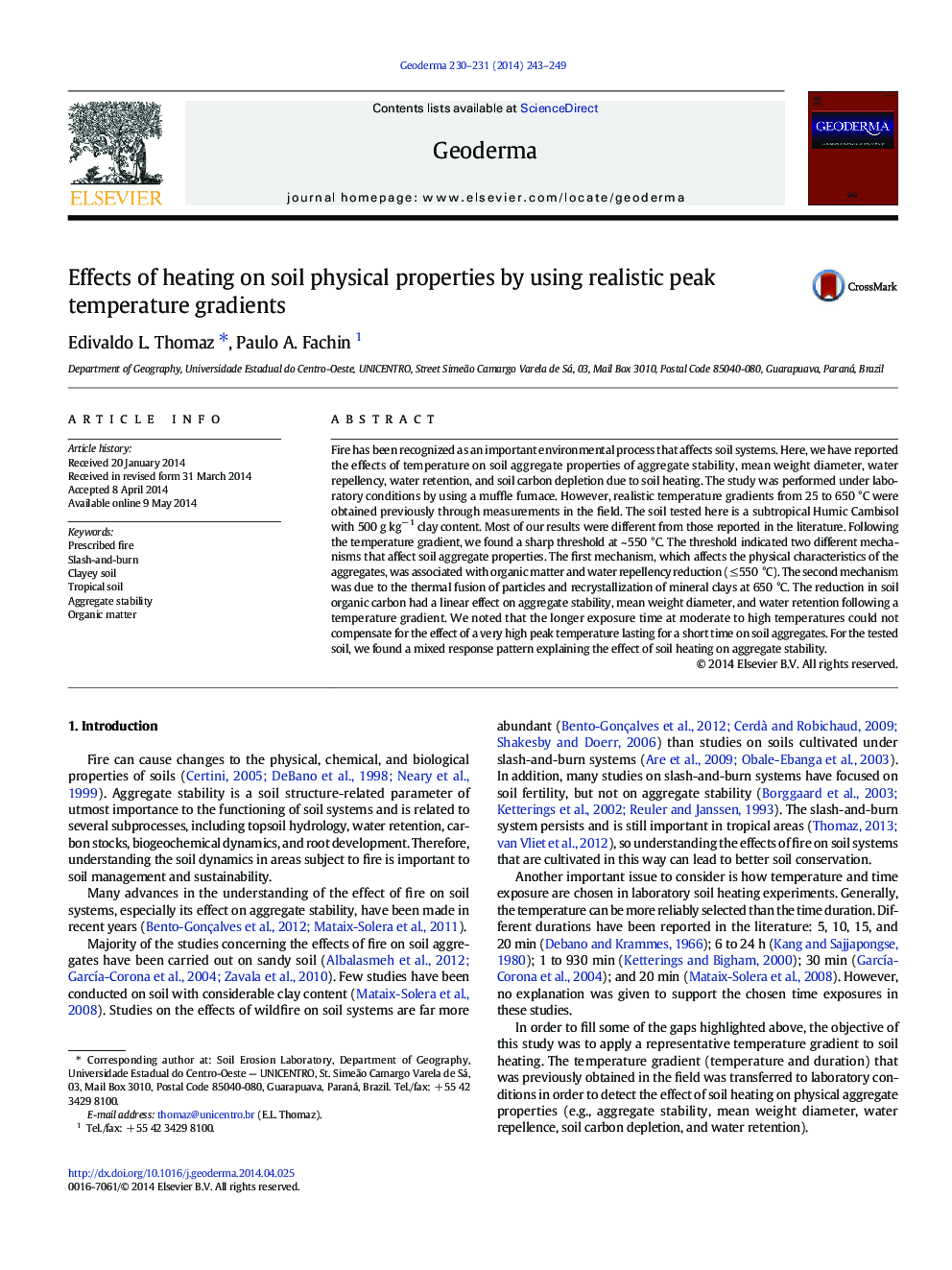| Article ID | Journal | Published Year | Pages | File Type |
|---|---|---|---|---|
| 4573250 | Geoderma | 2014 | 7 Pages |
•A subtropical Humic Cambisol with 500 g kg− 1 of clay was tested in the laboratory.•A realistic temperature gradient was obtained through field measurements.•Following the temperature gradient, a sharp threshold was identified at ~ 550 °C.•Aggregates are affected by two mechanisms: organic carbon depletion and thermal fusion.•The reduction on soil organic carbon has a linear effect on some aggregate properties.
Fire has been recognized as an important environmental process that affects soil systems. Here, we have reported the effects of temperature on soil aggregate properties of aggregate stability, mean weight diameter, water repellency, water retention, and soil carbon depletion due to soil heating. The study was performed under laboratory conditions by using a muffle furnace. However, realistic temperature gradients from 25 to 650 °C were obtained previously through measurements in the field. The soil tested here is a subtropical Humic Cambisol with 500 g kg− 1 clay content. Most of our results were different from those reported in the literature. Following the temperature gradient, we found a sharp threshold at ~ 550 °C. The threshold indicated two different mechanisms that affect soil aggregate properties. The first mechanism, which affects the physical characteristics of the aggregates, was associated with organic matter and water repellency reduction (≤ 550 °C). The second mechanism was due to the thermal fusion of particles and recrystallization of mineral clays at 650 °C. The reduction in soil organic carbon had a linear effect on aggregate stability, mean weight diameter, and water retention following a temperature gradient. We noted that the longer exposure time at moderate to high temperatures could not compensate for the effect of a very high peak temperature lasting for a short time on soil aggregates. For the tested soil, we found a mixed response pattern explaining the effect of soil heating on aggregate stability.
